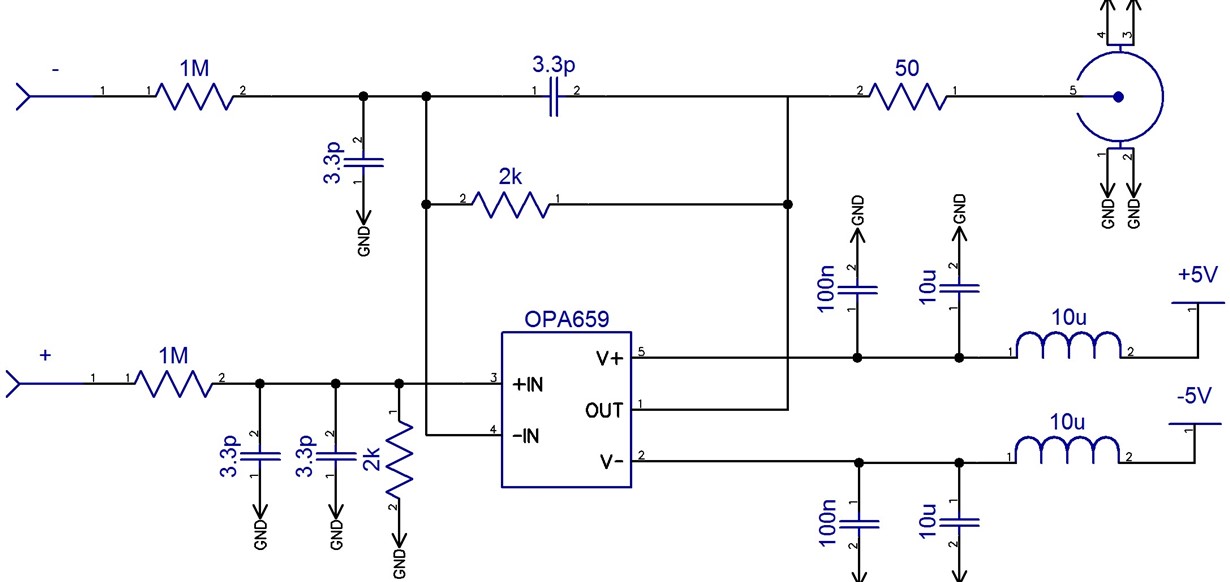Hi,
I made a differential probe for my scope, but the output signal does not seem nothing I expected, TINA or any similar software simulates.
The input signal is 5V, 2MHz square wave, the output should be 5mV (1:1000). I tested the input with DC, and the response was accurate. I suspect it has to do with input impedance, since when I replaced the 1Meg input with 200k and placed 12pF capacitors instead of 3.3p ones the output became what it should be, a nice 5mV square vawe. The input of the opamp is 10^12 and a few pF, I thought it should handle a 1M input. I need high impedance because I intend to use it on 230V line voltage too. As the sharp rising edges suggest the output improves at higher frequencies, but I am clueless why this shape in the few MHz range. Can anyone give me a hint?


